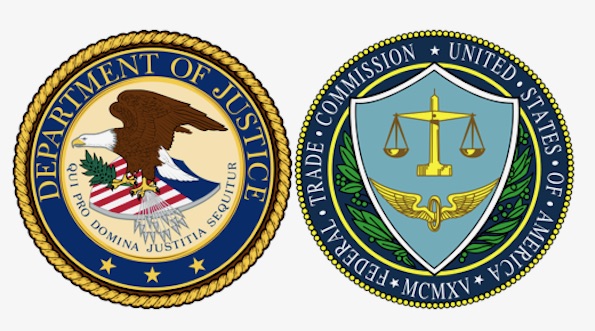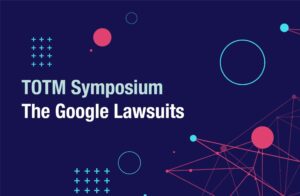Showing results for: “digital markets act”
Nuechterlein: Guidelines without Guidance on Vertical Mergers
[TOTM: The following is part of a symposium by TOTM guests and authors on the 2020 Vertical Merger Guidelines. The entire series of posts is available here. This post is authored by Jonathan E. Nuechterlein (Partner, Sidley Austin LLP; former General Counsel, FTC; former Deputy General Counsel, FCC).] [Nuechterlein: I represented AT&T in United States ... Nuechterlein: Guidelines without Guidance on Vertical Mergers
Hovenkamp: The Draft Vertical Merger Guidelines Are an Important Step for the Economic Analysis of Mergers
In its 2019 AT&T/Time-Warner merger decision the D.C. Circuit Court of Appeals mentioned something that antitrust enforcers have known for years: We need a new set of Agency Guidelines for vertical mergers. The vertical merger Guidelines were last revised in 1984 at the height of Chicago School hostility toward harsh antitrust treatment of vertical restraints. ... Hovenkamp: The Draft Vertical Merger Guidelines Are an Important Step for the Economic Analysis of Mergers
Welcome to the TOTM Blog Symposium on the 2020 Draft Joint Vertical Merger Guidelines
The 2020 Draft Joint Vertical Merger Guidelines: What’s in, what’s out — and do we need them anyway? February 6 & 7, 2020 Welcome! We’re delighted to kick off our two-day blog symposium on the recently released Draft Joint Vertical Merger Guidelines from the DOJ Antitrust Division and the Federal Trade Commission. If adopted by ... Welcome to the TOTM Blog Symposium on the 2020 Draft Joint Vertical Merger Guidelines
Ghosts of Antitrust Past: Part 4 (Microsoft)
The DOJ and 20 state AGs sued Microsoft on May 18, 1998 for unlawful maintenance of its monopoly position in the PC market. The government accused the desktop giant of tying its operating system (Windows) and its web browser (Internet Explorer). Microsoft had indeed become dominant in the PC market by the late 1980s: But ... Ghosts of Antitrust Past: Part 4 (Microsoft)
The Ghosts of Antitrust Past: Part 3 (AT&T)
The case against AT&T began in 1974. The government alleged that AT&T had monopolized the market for local and long-distance telephone service as well as telephone equipment. In 1982, the company entered into a consent decree to be broken up into eight pieces (the “Baby Bells” plus the parent company), which was completed in 1984. ... The Ghosts of Antitrust Past: Part 3 (AT&T)
Announcing the TOTM Symposium on the 2020 Draft Joint Vertical Merger Guidelines
Truth on the Market is pleased to announce its next blog symposium: The 2020 Draft Joint Vertical Merger Guidelines: What’s in, what’s out — and do we need them anyway? February 6 & 7, 2020 Symposium background On January 10, 2020, the DOJ Antitrust Division and the Federal Trade Commission released Draft Joint Vertical Merger ... Announcing the TOTM Symposium on the 2020 Draft Joint Vertical Merger Guidelines
The Ghosts of Antitrust Past: Part 2 (IBM)
The Department of Justice began its antitrust case against IBM on January 17, 1969. The DOJ sued under the Sherman Antitrust Act, claiming IBM tried to monopolize the market for “general-purpose digital computers.” The case lasted almost thirteen years, ending on January 8, 1982 when Assistant Attorney General William Baxter declared the case to be ... The Ghosts of Antitrust Past: Part 2 (IBM)
The Ghosts of Antitrust Past: Part 1
Big Tech continues to be mired in “a very antitrust situation,” as President Trump put it in 2018. Antitrust advocates have zeroed in on Facebook, Google, Apple, and Amazon as their primary targets. These advocates justify their proposals by pointing to the trio of antitrust cases against IBM, AT&T, and Microsoft. Elizabeth Warren, in announcing ... The Ghosts of Antitrust Past: Part 1
The 2020 Draft Joint Vertical Merger Guidelines: What’s in, what’s out — and do we need them anyway?
On January 10, 2020, the DOJ and FTC released their draft 2020 Vertical Merger Guidelines. “Challenging anticompetitive vertical mergers is essential to vigorous enforcement. The agencies’ vertical merger policy has evolved substantially since the issuance of the 1984 Non-Horizontal Merger Guidelines, and our guidelines should reflect the current enforcement approach. Greater transparency about the complex ... The 2020 Draft Joint Vertical Merger Guidelines: What’s in, what’s out — and do we need them anyway?
The Upsides of Collusion and Concentration
Conspiracies and collusion often (always?) get a bad rap. Adam Smith famously derided “people of the same trade” for their inclination to conspire against the public or contrive to raise prices. Today, such conspiracies and contrivances are per se illegal and felonies punishable under the Sherman Act. It is well known and widely accepted that ... The Upsides of Collusion and Concentration
FTC v. AbbVie – Questioning the Agency’s Enforcement Authority
A pending case in the U.S. Court of Appeals for the 3rd Circuit has raised several interesting questions about the FTC enforcement approach and patent litigation in the pharmaceutical industry. The case, FTC v. AbbVie, involves allegations that AbbVie (and Besins) filed sham patent infringement cases against generic manufacturer Teva (and Perrigo) for the purpose ... FTC v. AbbVie – Questioning the Agency’s Enforcement Authority
Debating the FTC v Qualcomm Amicus Brief, a Summary
Qualcomm is currently in the midst of a high-profile antitrust case against the FTC. At the heart of these proceedings lies Qualcomm’s so-called “No License, No Chips” (NLNC) policy, whereby it purportedly refuses to sell chips to OEMs that have not concluded a license agreement covering its underlying intellectual property. According to the FTC and ... Debating the FTC v Qualcomm Amicus Brief, a Summary






